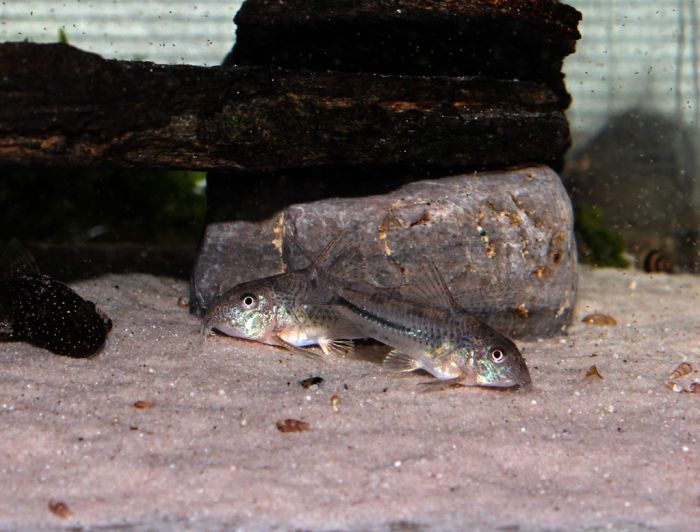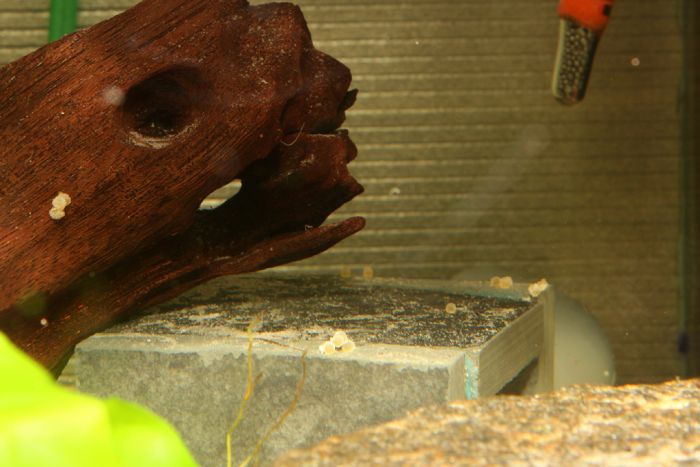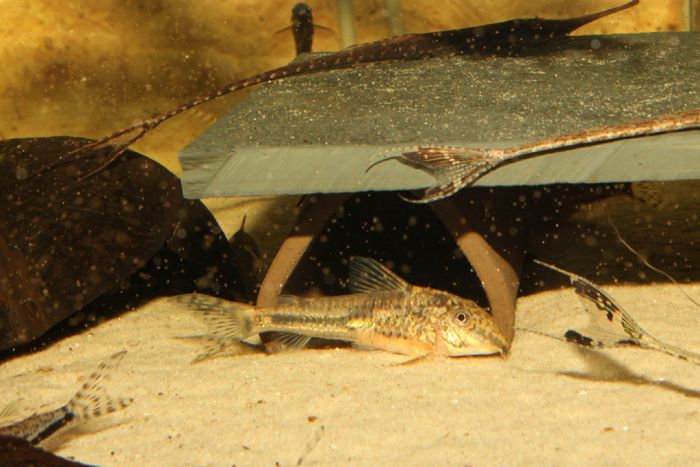Report No. 2 Scleromystax - Roman Lechner
Submitted by Scleromystax on 26. January 2017 - 9:10
Scleromystax sp. C112
On the evening of 14.11.16 I discovered many large (>2mm) eggs in the S. sp. C112 aquarium. Interestingly, they were not concentrated in one spot as in Scleromystax or Aspidoras species, but distributed throughout the tank. Most of the eggs were laid in the sand, some of them buried. When the eggs were transferred to a gauze-bottomed tank with a flow-through, 123 eggs were counted. Unfortunately no fry developed from these eggs, on 18.11. all eggs were bad.
As transferring corys to another aquarium often promotes spawning, I put the two Scleromystax species into the respective other aquarium on 01.01.17. I changed 70% of the water and added a larger powerhead and a few alder cones. Already on 02.01. spawning could be observed. Although there was clearly more current, the eggs were laid again in a scattered manner.
Unfortunately these eggs did not develop either.
The story of the S. sp. C112 ends here for the time being, as the only male was found dead on 04.01. and no further specimens of Scleromystax sp. C112 could be acquired so far.
Scleromystax prionotos
Like the S. sp. C112, the S. prionotos were moved to another tank (40x40x20 cm) on 01.01.17 and a small powerhead was used with a simultaneous 70% water change. On 04.01. approx. 35 eggs were found, distributed under an Anubias as well as on stones and in the sand. The water values were 130µS/cm and 23-24°C. Unfortunately the eggs looked unfertilised from the beginning. After a few bad eggs were discovered again on 07.01., I set a strong powerhead with a timer (resting phase at night and also every 1-2h during the day).
On 09.01. they spawned again. This time, however, over 100 eggs were placed in the Anubias, on a spawning strip, on the pump and the majority in the spawning mop. The eggs looked good and I transferred them to a breeder box with a gauze bottom. I also added some more tea extract to the tank for the wellbeing of the adults and the eggs. The next day I was able to collect another 40 eggs.
The first larvae hatched in the evening of 12.01. Most of the eggs had developed and you could see the larvae turning in the eggs.
The first cautious feeding of the fry took place on 15.01. with freshly hatched Artemia naeuplii, which were immediately accepted. In the meantime, fine fry food has also been accepted. There are about 100 fry swimming in the breeder box.



Category:
